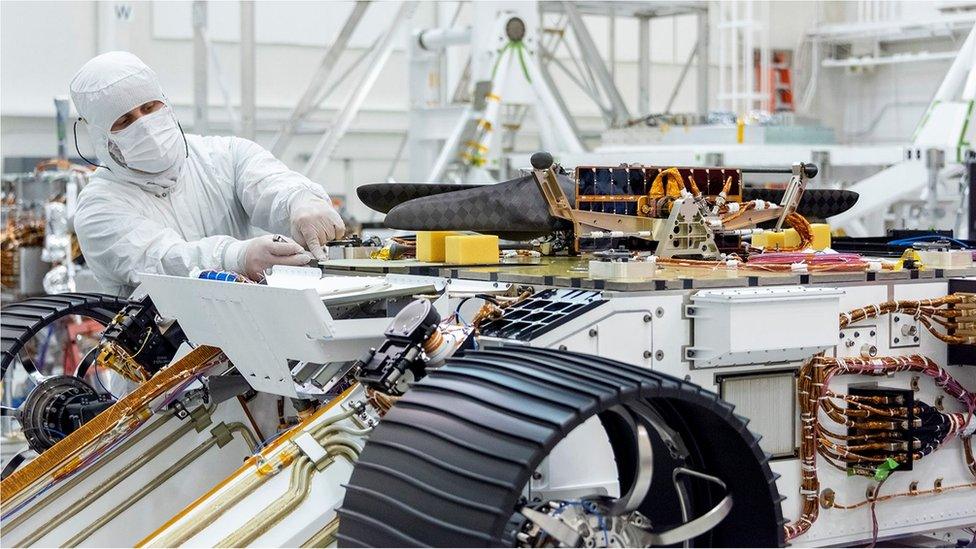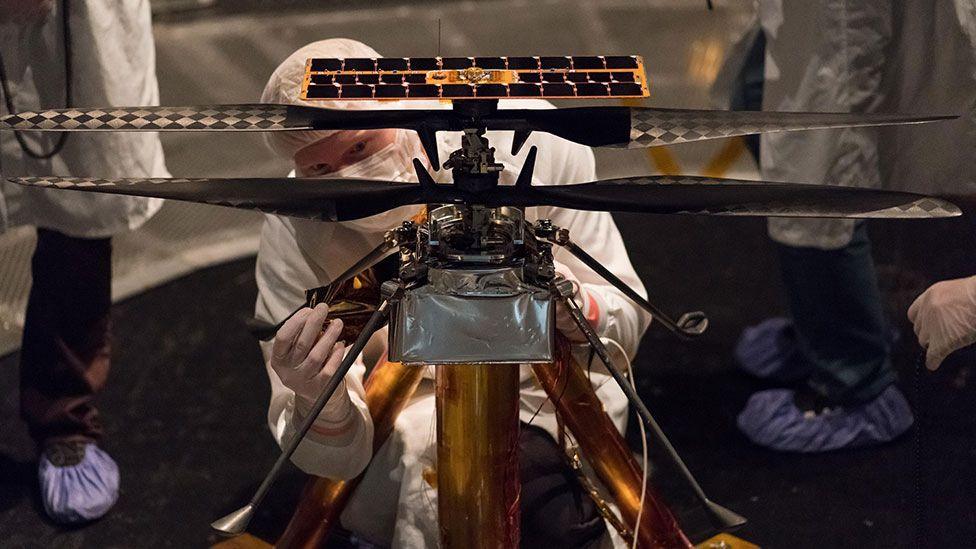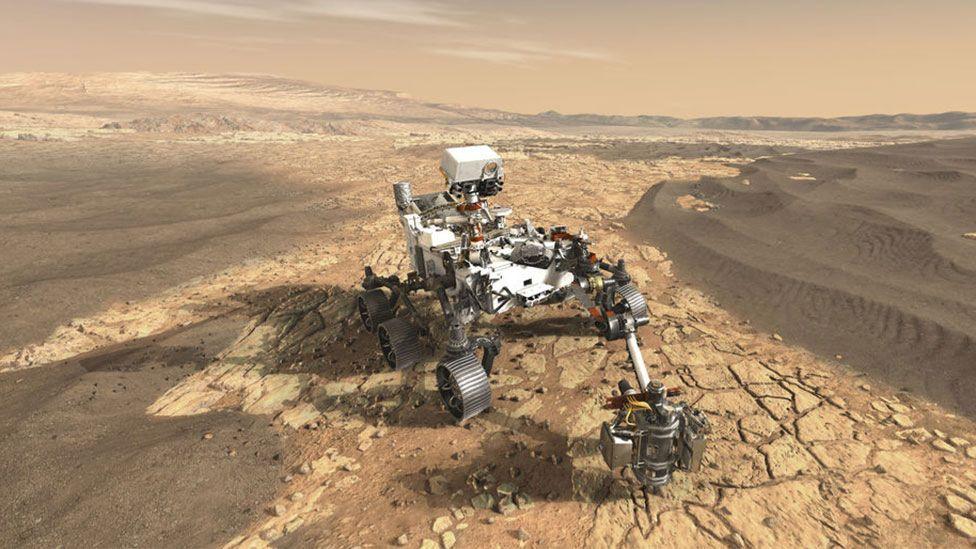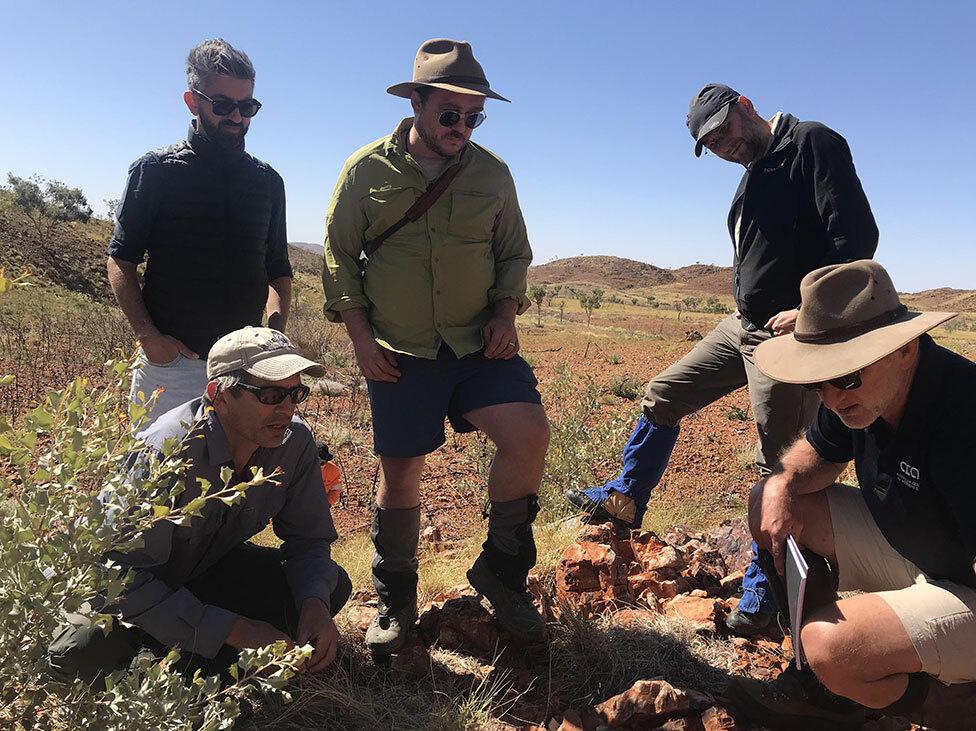Mars mission readies tiny chopper for Red Planet flight
- Published

The rover was turned upside down so engineers could attach the helicopter
Engineers preparing the next American Mars rover have installed one of its most exciting experiments - a chopper.
The mini-helicopter is regarded as a bonus on the 2020 mission, external.
It will be the first such aircraft deployed on another world. If it works, it'll be amazing, but if it doesn't it won't detract from the overall goals.
The US space agency's (Nasa) next Mars rover is a near-copy of the one-tonne Curiosity vehicle that has operated successfully in Gale Crater since 2012.
The new mission will be aimed at a different target - a 50km-wide depression called Jezero Crater.
Engineers are nearing the end of the rover's assembly at Nasa's Jet Propulsion Laboratory in California.

The Scout has a rotor length of just over a metre
They've positioned the 1.8kg "Scout" chopper under the big robot. The idea is that the rover will find a safe place to put the aircraft on the ground shortly after landing.
That does mean, however, that the twin-rotor device must travel with some protection.
The rover's touchdown mechanism uses rockets and these will kick up stones and dust. As a consequence, a shield is being fitted around the helicopter to deflect any debris.
There are no scientific instruments on the solar-powered Scout. Its job is merely to demonstrate the practicality of flight on another planet.
It will, though, carry a camera and researchers will certainly be interested in the pictures it takes to give context to the rover's exploration.
Ultimately, however, small helicopters could become a regular feature of future missions, not just to do reconnaissance but to study the more hard-to-reach places such as cliffs, caves and deep ravines.
Nasa recently approved a mission to put a helicopter on Titan, a moon of Saturn. Like the Earth and Mars, Titan has an atmosphere - a thick one - and can support aero-vehicles.

The Mars 2020 rover is a near copy of the 2012 Curiosity rover
The Mars 2020 mission launches in July next year. Its landing is scheduled for 18 February 2021.
Although it looks just like Curiosity, the new rover has a separate suite of instruments to ask some different scientific questions.
These include the most direct of all questions about Mars: is there, or has there ever been, life on the planet?
The 1970s Viking landers aside, all previous surface missions have only really considered the issue of habitability. That is, they investigated only whether life might have found conditions favourable had it been present.

The rocks in the Pilbara Outback record the activity of microbes on the ancient Earth

Jezero Crater has some very interesting rocks that look from orbit as though they may have formed at the edge of a lake-sized body of water.
The Mars 2020 rover will examine the chemistry of these rocks for evidence of past biology.
Mission scientists have just returned from a trip to Western Australia where they visited some of the oldest traces of life on Earth.
These are the 3.4-billion-year-old remnants of fossilised stromatolites - the carbonate mounds that were built by bacterial communities in calm waters, just like those found at the edge of a lake.
The researchers wanted to get a feel for the kind of physical structures that can be left on ancient landscapes by microbial activity.
The expedition to the Pilbara Outback included colleagues from Europe who have their own rover set for launch next year, also in July.
This vehicle, known as Rosalind Franklin, completed its assembly at an Airbus factory in England on Tuesday. It has now been sent to a test centre in France.
Like the American rover, Rosalind Franklin will search for life signs, but it will do this on a flat equatorial plain known as Oxia.
Nasa launched a schools essay-writing competition, external on Wednesday to find an engaging name for its rover. The new name to replace "Mars 2020" will be announced in February, exactly a year before landing day.